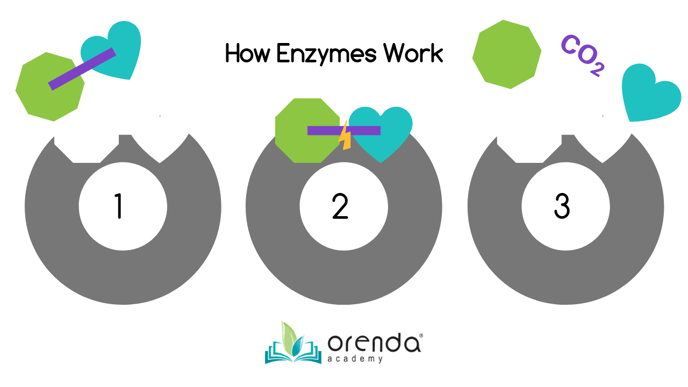What do enzymes do?
Enzymes are amino acids that catalyze certain chemical reactions. In the case of CV-600 and CV-700, they efficiently break down non-living organics and oils.
Orenda enzymes (CV-600 and CV-700) target and break apart carbon-chain non-living organics and oils.
Related: Organic waste and carbon management (Pillar 2)
Enzymes are non-living amino acids and proteins. Our bodies have thousands of types of enzymes, most of which are in the digestive system. Our enzyme products CV-600 and CV-700 actually use the same enzyme, as explained here.
We also have an article explaining in further detail how enzymes work.
Enzyme structure

In the above diagram–a work of artistic brilliance, we might add–The enzyme is represented by the gray ring. This represents a cluster of amino acids with a unique shape that attracts only a certain type of molecule, which is represented by the green and turquoise shape. The green and turquoise item, in this case, is a non-living organic, such as body oil, lotions, cosmetics, deodorant, sunscreen, saliva or sweat. Basically anything your body naturally produces or products we put on our bodies.
The purple line between them is the carbon bond.
Our enzymes break the carbon bond, convert it to CO2, and that process dramatically simplifies the organic contaminant. It's like cutting up a steak into a thousand tiny pieces.
We use the figure of speech of digestion, because enzymes in our stomachs do the exact same thing for various nutrients and compounds we consume. The process is identical, so we say CV-600 and CV-700 enzymes digest non-living organics. What that really means is they break them down and remove the carbon bonds holding it together.
The result is a dramatically reduced oxidant demand, and much cleaner water.
